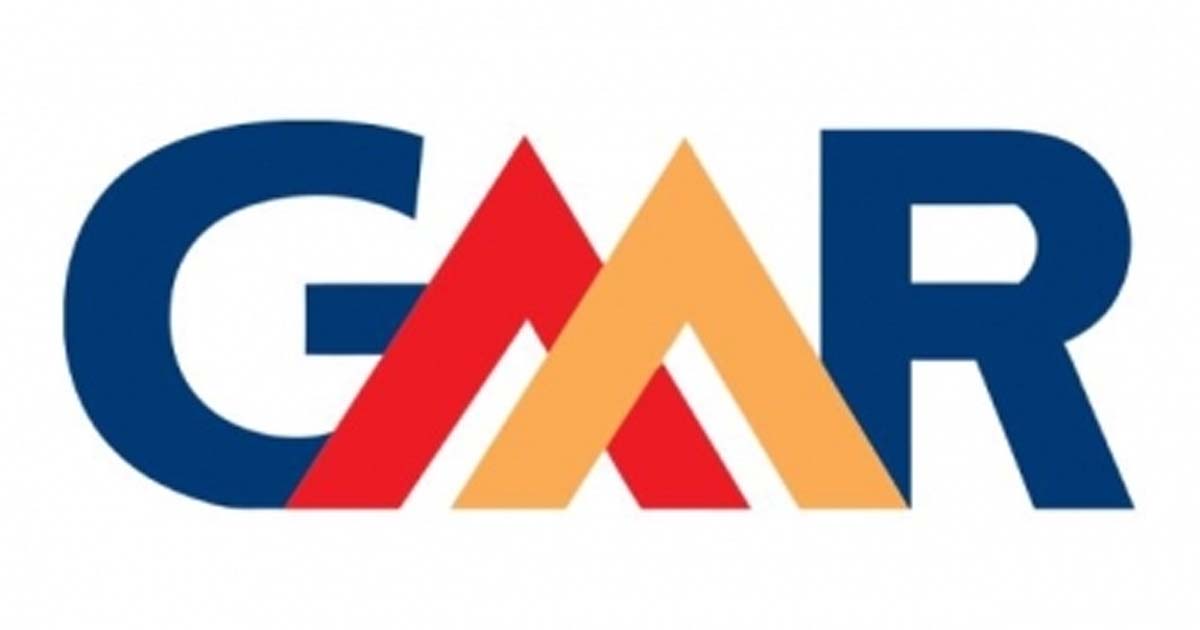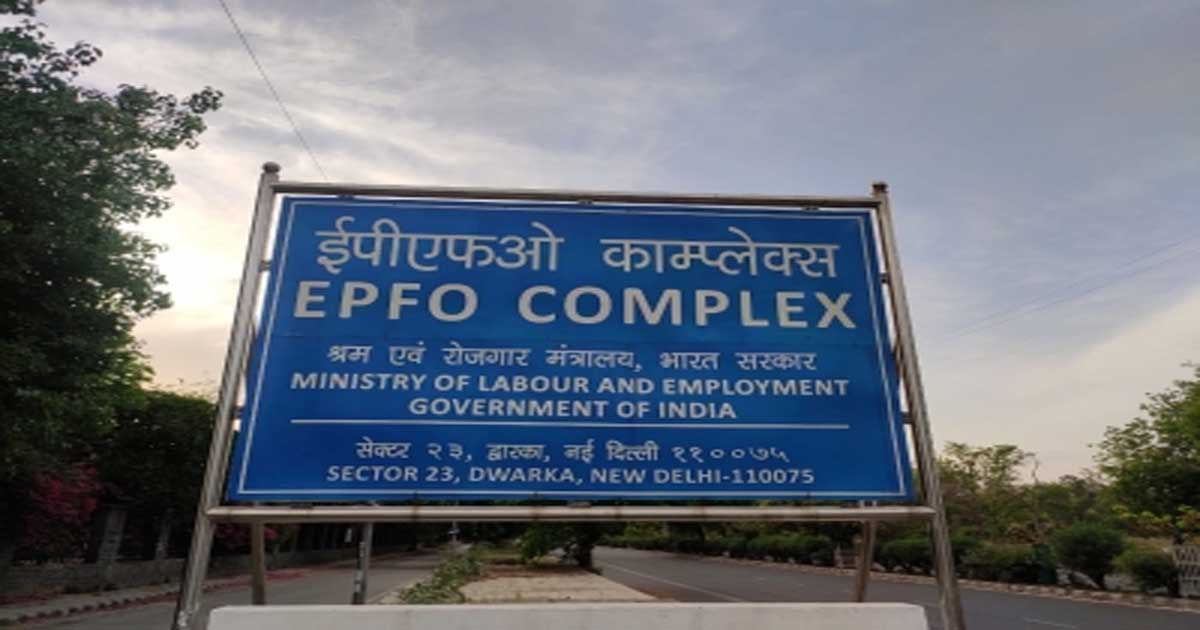Business
GMR Airports piles up Rs 253 crore loss in January-March quarter

New Delhi, May 23: GMR Airports on Friday reported an increase in its consolidated loss to Rs 253 crore for the January-March quarter of 2024-25, even as the company’s total income increased during this period.
The company had made a loss of Rs 168 crore in the same quarter of the previous year.
GMR Airports said in a regulatory filing that its total income rose to Rs 2,977 crore in the fourth quarter of 2024-25 from Rs 2,570 crore in the year-ago period.
During the fourth quarter, EBITDA stood at Rs 1,122.74 crore in the March quarter 2025, registering a growth of 19.39 per cent YoY.
Total expenses shot up 13.73 per cent year-on-year to Rs 1,854.02 crore in the quarter ended March 31, 2025. Cost of materials consumed stood at Rs 42.80 crore, employee benefits expenses were at Rs 393.52 crore, and other expenses were at Rs 586.63 crore in Q4 FY25
For the full financial year 2024-25, the company’s loss worked out to Rs 817 crore compared to the loss of Rs 829 crore in the same period a year ago.
GMR Airports Ltd (GAL) operates the Delhi, Hyderabad, and Mopa (Goa) airports. Besides, it is developing the Bhogapuram Airport in Andhra Pradesh.
“Total passenger traffic at GAL-owned airports increased by 9 per cent year-on-year, 31.5 million in Q4 FY25, and 9 per cent year-on-year to 120.5 million in FY25,” the regulatory filing said.
GAL is also operating Medan Airport in Indonesia and developing Crete Airport in Greece as part of its overseas ventures.
GAL said the tariff order issued by regulator AERA for the fourth control period ending March 31, 2029, would significantly improve the aero revenue of its operations at the Delhi airport, which in turn would lead to an increase in the overall profitability and cash flow generation at DIAL and the company.
The tariff order came into effect on April 16, 2025.
“The financials of DIAL and GAL would have been better, had this order been issued during FY25,” the filing said.
The GAL share prices fell over 2 per cent to Rs 87.08 apiece in late afternoon trade on BSE.
Business
FIIs return to Indian markets, pump in over Rs 10,000 crore in October

Mumbai, Oct 16: After months of selling, foreign investors seem to be regaining confidence in Indian stock markets as the data from NSDL shows that between October 7 and October 14, Foreign Institutional Investors (FIIs) were net buyers in five of the last seven trading sessions, purchasing shares worth over Rs 3,000 crore in the secondary market.
Their buying in the primary market was even stronger, crossing Rs 7,600 crore, as per the data.
Provisional data from the NSE also indicates that FIIs continued their buying streak on October 15, adding another Rs 162 crore.
This renewed buying interest has come alongside a steady rise in key market indices.
Since the beginning of October, both the Sensex and Nifty have gained around 3 per cent, while the BSE MidCap index has climbed 3.4 per cent and the SmallCap index has advanced 1.7 per cent.
The sudden shift in foreign fund flows has surprised many market watchers. Some analysts see this as a short-term rebound, while others believe it reflects improving corporate earnings prospects and stabilising economic conditions in India.
This turnaround is a sharp contrast to the heavy outflows seen earlier this year. From January to September 2025, FIIs sold more than Rs 2 lakh crore worth of shares in the secondary market.
This happened even as the Reserve Bank of India and the government took several steps to support growth, including GST rate cuts, a steep repo rate reduction in June, and an upgrade in India’s sovereign credit rating by S&P.
During that time, Indian markets lagged behind global peers. The Sensex and Nifty rose only about 3 per cent, while the MidCap and SmallCap indices fell 3 per cent and 4 per cent, respectively.
Now, sentiment is improving on hopes of a possible India–US trade deal amid growing US–China tensions.
Expectations of a US Federal Reserve rate cut later this month are also fueling optimism, as it could bring more liquidity into emerging markets and commodities.
Experts believe India remains an attractive investment destination for global investors, supported by a weaker rupee, relatively modest valuations, and expectations of double-digit earnings growth for Nifty companies in the second half of FY26.
Business
Sensex, Nifty open higher on positive global cues

Mumbai, Oct 15: Indian stock markets opened on a positive note on Wednesday, taking cues from the upbeat global sentiment.
The Sensex climbed 243 points, or 0.30 per cent, to trade at 82,273, while the Nifty rose 79 points, or 0.31 per cent, to start the day at 25,225.
Commenting on the Nifty’s technical outlook, experts said that though the 20-day SMA stepped in yesterday, to limit the extent of the drop, we prefer to give more weightage to the bearish engulfing pattern, thus acknowledging the prevailing bearish bias.
“Meanwhile, we remain equally prepared to switch sides, if Nifty manages to push beyond 25230. However, we will wait for a break beyond 25330 to play directional upsides,” they added..
Buying was seen across most sectors, with heavyweights like Bajaj Finserv, Bajaj Finance, NTPC, L&T, Power Grid, BEL, Bharti Airtel, Trent, and Asian Paints leading the gains. These stocks moved up by as much as 1.2 per cent in early trade.
However, some pressure was seen in select counters such as Tech Mahindra, Axis Bank, Infosys, and Titan Company, which slipped up to 1.2 per cent.
In the broader market, the Nifty MidCap index gained 0.38 per cent, while the Nifty SmallCap index advanced 0.20 per cent — indicating a positive trend beyond the frontline indices.
Among sectoral indices, Nifty IT and Financial Services rose 0.6 per cent each, while PSU Bank and Realty indices also traded higher — reflecting a broadly optimistic market mood.
Experts said that investors are likely to track global market trends, crude oil prices, and institutional flows for further direction.
“In the current environment of heightened volatility and mixed market cues, traders are advised to maintain a cautious “buy-on-dips” approach, particularly when using leverage,” analysts said.
“Booking partial profits during rallies and maintaining tight trailing stop-losses is recommended to manage risk. Fresh long positions should be considered only if the Nifty sustains above the 25,300 mark,” they added.
Business
Explained: EPFO overhauls withdrawal rules to boost transparency, ease access for 30 crore members

New Delhi, Oct 14: The Employees’ Provident Fund Organisation (EPFO) has restructured its partial withdrawal regulations, combining 13 distinct clauses into three main categories: Essential Needs, Housing Needs, and Special Circumstances. This change aims to make it easier to access provident fund savings.
For the nearly 30 crore members who collectively own a corpus of about Rs 30 lakh crore, the reform aims to make the withdrawal process quicker, simpler, and more transparent.
The revised framework, referred to as EPFO 3.0, has standardised withdrawal limits.
Depending on the goal, members can now access up to 100 per cent of their eligible provident fund balance, which includes employer and employee contributions. However, at least 25 per cent of the EPF balance needs to stay in the account in order to maintain a safety net for retirement.
This implies that members can keep the required balance while withdrawing up to 75 per cent of their total corpus.
Additionally, the new regulations standardise the requirements for services. In the past, there were specific requirements for each type of withdrawal, such as five years of service for housing purposes and seven years for marriage-related withdrawals.
All partial withdrawals are now subject to a single 12-month minimum service period, which streamlines the procedure and removes any ambiguity.
Members will no longer need to provide documentation of their withdrawals under the “Special Circumstances” category, which is a significant relaxation. In the past, withdrawals under this heading required proof of emergencies, such as natural disasters or job loss.
The new clause, which permits members to leave without giving a reason, is anticipated to reduce red tape and expedite approvals.
The EPFO has also increased the withdrawal limits for marriage and education-related withdrawals. Instead of the previous cap of three combined withdrawals, members can now make up to 10 withdrawals for education and five for marriage.
Stricter guidelines for final settlements are also introduced by the reforms, though. In contrast to the previous two-month eligibility window, members can now only apply for an early final settlement 12 months after quitting their job and for pension withdrawal 36 months later.
In the event of a job loss, the 25 per cent minimum balance requirement only applies to partial withdrawals; it does not apply to full settlements.
While it is anticipated that the simplified framework will increase efficiency and transparency, workers who are laid off or have experienced extended periods of unemployment may find it difficult to obtain their provident fund savings immediately during a time when they may need it most, due to the revised settlement timelines.
-

 Crime3 years ago
Crime3 years agoClass 10 student jumps to death in Jaipur
-

 Maharashtra1 year ago
Maharashtra1 year agoMumbai Local Train Update: Central Railway’s New Timetable Comes Into Effect; Check Full List Of Revised Timings & Stations
-

 Maharashtra1 year ago
Maharashtra1 year agoMumbai To Go Toll-Free Tonight! Maharashtra Govt Announces Complete Toll Waiver For Light Motor Vehicles At All 5 Entry Points Of City
-

 Maharashtra1 year ago
Maharashtra1 year agoFalse photo of Imtiaz Jaleel’s rally, exposing the fooling conspiracy
-

 National News1 year ago
National News1 year agoMinistry of Railways rolls out Special Drive 4.0 with focus on digitisation, cleanliness, inclusiveness and grievance redressal
-

 Maharashtra11 months ago
Maharashtra11 months agoMaharashtra Elections 2024: Mumbai Metro & BEST Services Extended Till Midnight On Voting Day
-

 National News1 year ago
National News1 year agoJ&K: 4 Jawans Killed, 28 Injured After Bus Carrying BSF Personnel For Poll Duty Falls Into Gorge In Budgam; Terrifying Visuals Surface
-

 Crime1 year ago
Crime1 year agoBaba Siddique Murder: Mumbai Police Unable To Get Lawrence Bishnoi Custody Due To Home Ministry Order, Says Report












